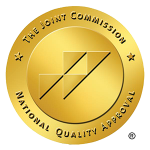Anxiety and Addiction Treatment in San Diego, CA
Treatment for Anxiety and Addiction
We all feel worried sometimes—it’s just a part of life. But when that worry becomes overwhelming and starts affecting your daily routine, it could be a sign of an anxiety disorder. It’s important to recognize when anxiety is more than just a passing concern, as untreated anxiety can seriously affect both mental and physical health. Unfortunately, many people turn to substances to cope, which can lead to addiction and create a tough cycle that’s hard to break without professional support.
Anxiety disorders and addiction are among the most prevalent mental health challenges in the United States. According to the National Alliance on Mental Illness (NAMI), approximately 19.1% of U.S. adults experienced an anxiety disorder in 2018, which equates to about 48 million people. In California, nearly 1 in 7 adults experience a mental illness and 1 in 26 struggle with a serious mental illness that disrupts daily activities.
Bayview Recovery Center in San Diego, California can help if these challenges affect your life. With expert care and tailored treatment plans, men don’t have to face recovery alone.
What Is an Anxiety Disorder?
An anxiety disorder is a mental health condition characterized by excessive and persistent fear, worry, or unease that goes beyond normal, temporary feelings of stress or nervousness. It’s more than just feeling anxious occasionally—it is an overwhelming experience that can dominate a person’s thoughts and interfere with their ability to function.
This type of anxiety is not limited to specific stressful events; it often persists and escalates over time, making it difficult for individuals to manage daily responsibilities. The condition can affect how people think, feel, and act, profoundly impacting their overall quality of life.
Unlike occasional anxiety that resolves when a stressful situation ends, anxiety disorders often occur without a clear trigger. This constant or recurring anxiety can disrupt various areas of life, including:
- Work or Career: Anxiety can hinder focus, productivity, and confidence, making it challenging to perform effectively at work.
- Education: For students, anxiety may interfere with their ability to engage in classroom activities or achieve academic success.
- Relationships: Anxiety can create barriers in social and personal relationships, as individuals may struggle to communicate or withdraw from others.
Anxiety disorders are complex conditions that require understanding, support, and professional treatment for effective management. With proper care, individuals can regain control and reduce their impact on daily life.
Signs and Symptoms of Anxiety
Anxiety disorders can show up in different ways for different people, but several common signs and symptoms may indicate the presence of a problem. Unlike normal anxiety, they are intense, persistent, and disrupt daily life.
- Excessive Worry: Persistent, uncontrollable worry about work, family, or finances that feels overwhelming and out of proportion.
- Restlessness: Constant sense of being “on edge,” making it difficult to relax or stay calm in daily life.
- Fatigue: Anxiety drains mental and physical energy, leaving individuals feeling tired even without engaging in strenuous activities.
- Difficulty Concentrating: Struggles with focus or a “blank mind,” interfering with work, school, or completing simple tasks.
- Irritability: Heightened sensitivity to stress, causing frustration or annoyance over small issues and provoking stronger emotional responses.
- Muscle Tension: Tightness or pain in muscles, often accompanied by jaw clenching or fists tightening unconsciously.
- Sleep Disturbances: Trouble falling asleep, waking frequently, or feeling unrefreshed due to poor sleep quality.
If you or someone you know is experiencing these symptoms, seek help. Anxiety disorders are treatable, and early intervention can improve outcomes. A healthcare professional can provide diagnosis and effective treatments. You don’t have to face anxiety alone—help is available.
Types of Anxiety Disorders
Anxiety disorders represent a group of mental health conditions that share similar characteristics but differ in their specific triggers and symptoms. Each type of anxiety disorder presents unique challenges and can significantly impact an individual’s quality of life.
Generalized Anxiety Disorder (GAD)
GAD involves chronic, excessive worry about various topics or activities, often disproportionate to actual circumstances. Physical symptoms like restlessness, fatigue, and muscle tension accompany the anxiety, making it difficult to focus or maintain relationships.
Panic Disorder
This disorder features recurring, unexpected panic attacks, which are sudden episodes of intense fear or discomfort. Symptoms like a racing heart, shortness of breath, and chest pain can occur, often leading to avoidance behaviors and disruptions in daily life.
Social Anxiety Disorder (Social Phobia)
Social anxiety disorder causes extreme fear and self-consciousness in social or performance situations. Individuals may avoid social interactions or activities like public speaking due to fear of judgment or embarrassment, affecting personal and professional relationships.
Specific Phobias
Specific phobias involve intense, irrational fears of objects or situations, like heights or flying. Avoidance behaviors disrupt routines and limit life experiences, despite recognizing the fear as unreasonable.
Obsessive-Compulsive Disorder (OCD)
OCD is marked by intrusive thoughts (obsessions) and repetitive behaviors (compulsions) aimed at reducing anxiety. These rituals can consume time and interfere with daily responsibilities.
Post-Traumatic Stress Disorder (PTSD)
PTSD develops after trauma, causing symptoms like intrusive memories, flashbacks, and severe distress. Individuals may avoid reminders of the event and struggle with emotional numbness, impacting relationships and functioning.
The Relationship Between Anxiety and Addiction
There’s a strong connection between anxiety disorders and substance use disorders (SUDs), often referred to as co-occurring disorders. Persistent worry and fear can become overwhelming, leading individuals to turn to substances such as alcohol or drugs for relief. While this self-medication may provide a temporary escape, it often leads to dependence, worsening both conditions and creating a vicious cycle of increased anxiety and substance reliance.
Studies show that individuals with anxiety disorders are significantly more likely to develop SUDs than those without. For example, people with post-traumatic stress disorder (PTSD) have a 4.3% two-year incidence rate of developing SUDs, while those with generalized anxiety disorder (GAD) have a 3.0% incidence rate. These statistics highlight the complexity of co-occurring disorders and the need for specialized, integrated treatment.
Treatment for Anxiety and Addiction
Effectively addressing co-occurring anxiety and substance use disorders (SUDs) requires a comprehensive approach that treats both conditions simultaneously. This integrated method ensures effective management, lowers the risk of relapse and enhances long-term recovery outcomes. Key components of treatment include:
Medications
Medications can play a crucial role in managing both anxiety and addiction. Healthcare providers may prescribe:
- Antidepressants: Help regulate mood and alleviate anxiety symptoms.
- Anti-anxiety medications: Such as benzodiazepines (short-term use) or non-addictive options like buspirone.
- Substance Craving Medications: Medications like naltrexone or buprenorphine can reduce cravings and withdrawal symptoms, supporting recovery.
Dual Diagnosis Treatment
Dual diagnosis treatment is essential for individuals with both anxiety and SUDs. This integrated approach ensures mental health and addiction are treated together, addressing the root causes and symptoms of both. Without treating one condition, the other often worsens, so holistic care is key to recovery.
Therapy Services
Therapy is the cornerstone of treatment for anxiety and addiction. Various evidence-based modalities include:
- Cognitive behavioral therapy (CBT): A proven method for identifying and altering negative thought patterns that drive anxiety and addictive behaviors. By addressing these patterns, individuals learn healthier coping mechanisms.
- Dialectical behavior therapy (DBT): Combines mindfulness and emotional regulation techniques, helping individuals manage overwhelming emotions and reduce self-destructive behaviors often linked to addiction.
- Group therapy: Offers a supportive community where individuals can share experiences, build connections, and learn from others facing similar challenges. Group therapy reduces isolation and fosters accountability.
- Family therapy: Addiction and anxiety often strain relationships. Family therapy helps repair trust, improve communication, and create a strong support system to aid recovery.
At the heart of successful treatment is the understanding that recovery is a journey. Addressing both anxiety and addiction simultaneously creates the opportunity for long-term healing and a renewed sense of control over one’s life.
Help is Available at Bayview Recovery Center
If you or a loved one is struggling with anxiety and addiction, it’s crucial to know that help is available. Bayview Recovery Center in San Diego, California, specializes in treating adult men for substance abuse and mental health issues. Our structured program provides personalized care tailored to individual needs, offering treatment durations from 90 days to over six months.
At Bayview Recovery Center, our dedicated team delivers a comprehensive treatment plan designed to promote lasting recovery and overall well-being. Contact us today to take the first step toward a healthier, brighter future!

Alyssa is a licensed Clinical Social Worker and received her Master’s degree from San Diego State University. She has experience working with individuals in recovery of all ages for over eight years. Alyssa has also worked with at-risk homeless foster youth transitioning into independent living along with the families in the neonatal intensive care unit at UCSD.


